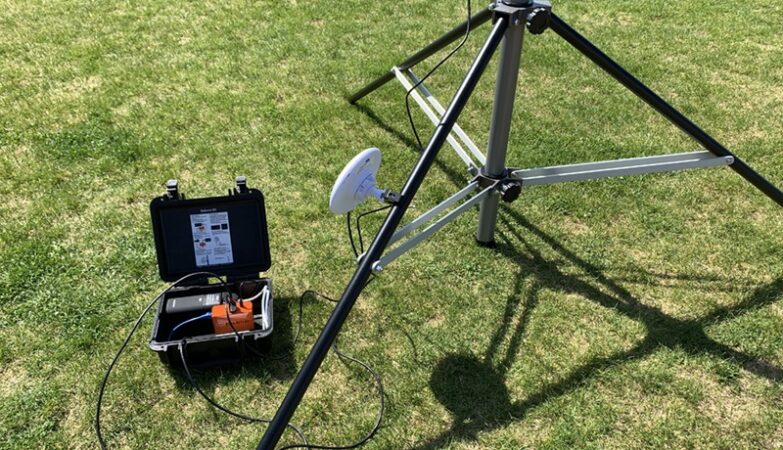Introduction: Mobile networks have become an integral part of our daily lives, connecting us to the digital world wherever we go. Behind the scenes, rigorous testing procedures ensure that these networks function optimally and provide a seamless user experience. In this article, we will delve into the different types of mobile network testing methods employed by telecommunications companies to ensure reliable connectivity and high-quality service. So, now let us see the different types of mobile network testing along with Accurate Mobile Network Monitoring Tools, Mobile Network Drive Test Tools, Mobile Network Testing Tools and Accurate Best wireless site survey software, site survey tools for wireless networks & Wifi site survey software app in detail.
- Coverage Testing: Coverage testing focuses on assessing the reach and strength of a mobile network. By conducting drive tests or using specialized tools, network operators can measure signal strength, identify areas of weak or no coverage (dead zones), and evaluate the effectiveness of signal handovers between cell towers. Coverage testing helps operators optimize network infrastructure, determine the need for additional cell sites, and enhance overall coverage to deliver uninterrupted connectivity to users.
- Performance Testing: Performance testing aims to evaluate the speed, stability, and quality of a mobile network. Key metrics examined during performance testing include data transfer rates, call quality, latency, and network response times. These tests are conducted under various conditions, such as peak usage hours or in areas with high network congestion, to assess how well the network performs under different scenarios. Performance testing helps operators identify bottlenecks, optimize network resources, and improve user experience by ensuring consistent and reliable network performance.
- Capacity Testing: Capacity testing focuses on assessing a mobile network’s ability to handle a high volume of simultaneous users and data traffic. By simulating heavy usage scenarios, such as streaming videos or downloading large files, network operators can determine the network’s capacity limits and identify potential congestion points. Capacity testing helps operators plan for network expansion, allocate resources efficiently, and ensure that the network can handle increasing data demands without compromising on quality or speed.
- Roaming Testing: Roaming testing is specifically designed to evaluate the performance and interoperability of mobile networks when users travel outside their home network’s coverage area. It ensures a seamless transition and consistent connectivity for users who roam onto partner networks. Roaming tests assess factors such as signal strength, call setup success rates, and data transfer reliability while roaming. By conducting comprehensive roaming testing, operators can establish robust partnerships with other network providers and deliver a reliable roaming experience to their customers.
- Interoperability Testing: Interoperability testing focuses on verifying compatibility and seamless communication between different network components, devices, and services. This type of testing ensures that mobile devices can connect seamlessly to the network, access services without compatibility issues, and perform optimally across various network technologies (e.g., 3G, 4G, 5G). Interoperability testing helps operators ensure that devices and services from different manufacturers work harmoniously within their network ecosystem, offering a consistent experience to users.
- Security Testing: Security testing plays a critical role in safeguarding mobile networks against potential threats and vulnerabilities. This type of testing aims to identify and address security weaknesses in network infrastructure, protocols, and applications. Security testing involves vulnerability assessments, penetration testing, and simulations of cyber-attacks to evaluate the network’s resilience and identify areas of improvement. By conducting robust security testing, operators can protect user data, maintain network integrity, and mitigate the risk of security breaches.
Conclusion: Mobile network testing encompasses a range of methods and techniques to ensure that users can enjoy seamless connectivity and reliable services. By conducting coverage testing, performance testing, capacity testing, roaming testing, interoperability testing, and security testing, operators can optimize network performance, enhance coverage, address potential issues, and deliver an exceptional mobile experience. These testing procedures are crucial in an ever-evolving digital landscape, where connectivity reliability and quality play a pivotal role in our daily lives. To ascertain the effectiveness of these various testing scenarios one must ensure that they have the right testing tool to back them up and that’s where tools like RantCell which is a smartphone-based testing tool play a huge role in changing the way people look at network testing, this cloud-based testing solution packs unique and effective features such as remote testing, day-wise scheduling, I-perf testing, Automation etc and all of this at a very economical pricing and it works on any modern day smartphone which is giving the traditional tools a run for their money.








